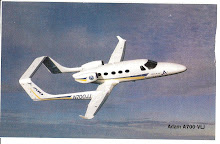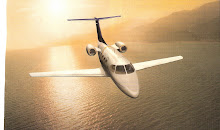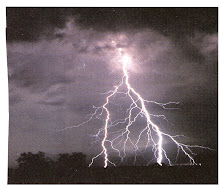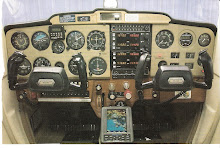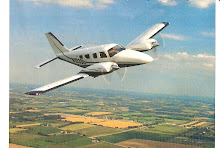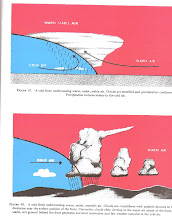Hi Readers: This is a good time to begin a career in aviation. There are no less than 12 major aviation career fields open, now employing hundreds of thousands of qualified personnel, male and female, all working to provide an expanding prime mode of transportation in the U.S. and most of the world. Within these career fields there are 70+ job opportunities that have to be filled, periodically, by attrition, retirement, or by new developments. The expansion of air travel itself, year to year, keeps the need current for more pilots, air traffic controllers, mechanics, and other qualified personnel.
Currently, the aviation industry offers opportunities in pilot careers, airline and airport operations, airline and airport services, aircraft companies (new companies and expansion), aircraft systems and electronics maintenance, technical services, food services, law and security services, and travel and tourist operations. And this list does not include the federal, state, and municipal department and agency requirements for aviation services (such as for fire and rescue, ambulance and health, etc.), and does not include the military use off independent contractors for air travel requirements. Nor does it include aviation requirements by agencies such as DOT, FAA, and NTSB.
In the midst of the jet age, development of new airplanes and equipment have required advanced designs and manufacture, resulting in new jobs, particularly in connection with automated digital systems and air traffic control. Air Cargo is expanding, day by day; and increased public travel have required more and better passenger processing and security. It is ironic that computer engineers are telling us that the present-day computer science will soon be replaced by more advanced systems.
All these career categories require education, training, and many, experience. Some of this is supplied by the airplane companies themselves; others, by independent aviation contractors; Colleges and Universities; and technical schools. There are private individual offers, also. Schools such as Embrey-Riddle, King, Airline Transport Professionals, and American Flyers, to cite a few, are seasoned aviation educational suppliers, as are colleges and universities. The University of North Dakota, for instance, has had a separate school for air traffic controllers. And there are others. Almost all of these contractors provide computer on-line courses, either complete or incrementally.
The cost of the education and training for these categories is not cheap, but appears reasonable considering a lot of the training garantees job placement and at least interview. The flying-hour certificates, such as a Regional Jet Standards Certificate, which garantees an airline pilot interview (with Airline partnerships) can run $5,995/7days. Garanteed ME ratings are priced at $1,295 to $1,475, an ATP certificate is priced at $1,595, and a multi-CFI for $1395. In Dallas, TX., for instance, ME PIC time is priced at $129/hr wet.
There is all kinds of help on the computer to satisfy your needs for instruction and training. There is, for example, a 1300+ Aviation School Database on line - an index of flying schools http://www.bestaviation.net/. Seaplanes ratings, for instance, can be obtianed through http://www.adventureseaplane.com/ and Aircraft Dispatcher training can be obtained on-line and by correspondence courses from http://www.avgschools.com/. There are some opportunities with the Airlines themselves - Northwest Airlines has a website for unpaid internships, and University Aviation Associates has career opportunities for aviation educators. Aviation Associations, such as AOPA, can be a big help, too.
Aviation employment still appears very positive. A recent report from Regional Airlines indicate the need: WestJet Airlines for pilots, flight attendants, and mechanics; Wings of Alaska for pilots and mechanics; Gemini Air Cargo for pilots and mechanics; Ryan Intl Airlines for mechanics; Anana Flight for pilots and mechanics; A13X Airlines for pilots and mechanics; Mesaba Airlines for pilots, flight attendants, and mechanics, and USA 3000 Airlines for mechanics only. These were Jan and Feb reports.
The January 2008 NTSB aircraft Accident reports will be coming up soon.
Thanks for listening. R.S.
Friday, February 8, 2008
Saturday, February 2, 2008
Flight Into Terrain - VFR
Hi Readers: Very recently the National Transportation Safety Board (NTSB) published a Safety Alert on controlled flight into terrain, citing several prominent fatal aircraft accidents involving VFR and IFR pilots operating under VFR conditions at night, particularly in remote areas.
As noted (ver-batim):
1. In many cases, the pilots were in contact with Air Traffic Control (ATC) at the time of the
accident and receiving radar service.
2. The pilot and Controllers involved all appear to have been unaware that the aircraft was
in danger.
3. Increased altitude awareness and better preflight planning would likely have prevented
all of these accidents.
The Safety Alert continued with 8 points of preflight planning that might have avoided these accidents, among them (paraphrasing):
1. Darkness may eliminate your horizon and render avoidance of high terrain impossible.
2. When receiving radar service, do not depend on ATC to warn of terrain hazards ahead.
3. When issued a heading, along with "maintain VFR", be aware that the heading may not
provide adequate terrain clearance.
4. That ATC software provides only limited prediction and warning of terrain hazards, and
is designed for IFR flight, not VFR, and VFR coverage must be requested by the pilot.
I couldn't agree more with the Safety Alert (although I thought it could have been expanded to include weather), particularly with respect to the aforementioned preflight planning points. I have been discussing these points for some time now on my website.
The fact of the matter is that without surface light reflection below or ahead, complete darkness will be experienced and any mountain ahead will not be seen. This means that the horizon will be lost and continued flight will have to be on instruments. With regard to radar services, these services depend on the Controller's workload - which he is not obligated to provide for VFR flight. With respect to an issued heading, with instructions to "maintain VFR", that heading does not gaurantee terrain clearance - it's still up to the pilot. And, of course, the radar software was designed for IFR flight, not VFR flight.
I recommend that all pilots obtain and read this Safety Alert. I'm sure that NTSB will provide wide distribution of this Alert through their own and FAA channels. Also, pilots can download the Alert on AOPA ONLINE. To those of you who cannot locate the Alert, let me know on www.roberthshaw@sbcglobal.net and I will place the entire Safety Alert on www.Robertsflyers.blogspot.com.
New subject: AOPA ONLINE has an article "When Legal Isn't Safe" by Marc K. Henegar (who today is an Alaska Airlines B-737 Captain). An excellent article regarding pilot experience and "go-no go" decisions. Again, available on AOPA ONLINE.
Thanks for listening. R.S.
As noted (ver-batim):
1. In many cases, the pilots were in contact with Air Traffic Control (ATC) at the time of the
accident and receiving radar service.
2. The pilot and Controllers involved all appear to have been unaware that the aircraft was
in danger.
3. Increased altitude awareness and better preflight planning would likely have prevented
all of these accidents.
The Safety Alert continued with 8 points of preflight planning that might have avoided these accidents, among them (paraphrasing):
1. Darkness may eliminate your horizon and render avoidance of high terrain impossible.
2. When receiving radar service, do not depend on ATC to warn of terrain hazards ahead.
3. When issued a heading, along with "maintain VFR", be aware that the heading may not
provide adequate terrain clearance.
4. That ATC software provides only limited prediction and warning of terrain hazards, and
is designed for IFR flight, not VFR, and VFR coverage must be requested by the pilot.
I couldn't agree more with the Safety Alert (although I thought it could have been expanded to include weather), particularly with respect to the aforementioned preflight planning points. I have been discussing these points for some time now on my website.
The fact of the matter is that without surface light reflection below or ahead, complete darkness will be experienced and any mountain ahead will not be seen. This means that the horizon will be lost and continued flight will have to be on instruments. With regard to radar services, these services depend on the Controller's workload - which he is not obligated to provide for VFR flight. With respect to an issued heading, with instructions to "maintain VFR", that heading does not gaurantee terrain clearance - it's still up to the pilot. And, of course, the radar software was designed for IFR flight, not VFR flight.
I recommend that all pilots obtain and read this Safety Alert. I'm sure that NTSB will provide wide distribution of this Alert through their own and FAA channels. Also, pilots can download the Alert on AOPA ONLINE. To those of you who cannot locate the Alert, let me know on www.roberthshaw@sbcglobal.net and I will place the entire Safety Alert on www.Robertsflyers.blogspot.com.
New subject: AOPA ONLINE has an article "When Legal Isn't Safe" by Marc K. Henegar (who today is an Alaska Airlines B-737 Captain). An excellent article regarding pilot experience and "go-no go" decisions. Again, available on AOPA ONLINE.
Thanks for listening. R.S.
Subscribe to:
Comments (Atom)

